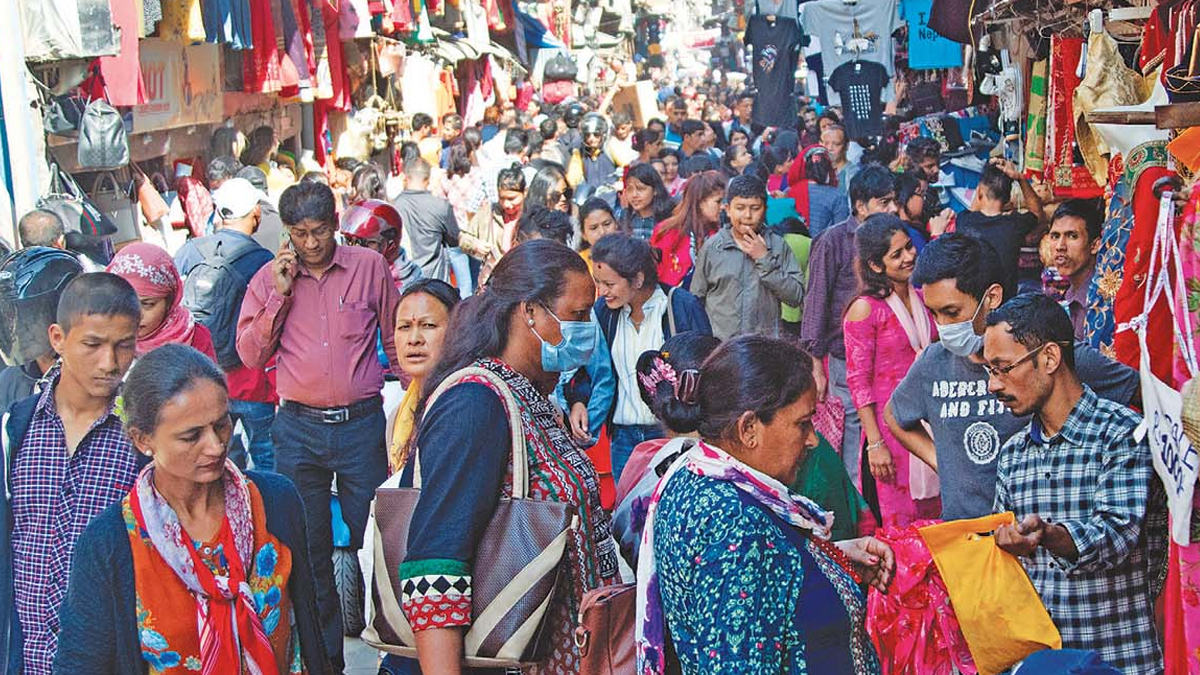
Tihar, Tight Budgets, and Inflation

As the Tihar festival, also known as the festival of lights, approaches in Nepal, reports from the markets this week reveal that many people are feeling the pinch in their pockets. Traditionally a time of celebration, gift-giving, and lavish spending, this year’s Tihar festivities are taking a hit as shoppers opt for caution amid rising inflation.
The five-day festival of lights is set to begin on Saturday, and while there’s still a festive spirit in the air, the number of shopping bags in hand has noticeably declined. This shift in consumer behavior is not due to a lack of enthusiasm for Tihar but rather a result of people tightening their budgets in the face of rising costs.
During Tihar, the most sought-after items include sweets, dry fruits, footwear, watches, toys, home decor, and fashion clothing, which are typically exchanged as gifts between siblings during Bhai Tika, a ceremony that falls on November 15. However, traders are noticing a slowdown in sales compared to previous years.
Resham Prasad Devkota, the president of the Federation of Electrical Entrepreneurs of Nepal, expressed his concerns, stating, “It looks like customers are on a tight budget. We are expecting the sales of festival lights worth Rs45 million this Tihar, down 20 percent compared to last year’s festival.” Devkota attributed this decline in sales to high inflation and noted that there were no orders for festival lights from corporate and construction sectors.
Inflation has indeed been a major contributor to the subdued spending this Tihar season. Nepalis traditionally save up throughout the year to splurge during festivals, but this year, rising prices have left them with less disposable income, affecting the overall festive sales. According to Nepal Rastra Bank statistics, year-on-year consumer inflation reached 8.19 percent in October, with food and beverage inflation spiking to 9.74 percent.
One of the prominent Tihar customs is decorating homes with strings of light bulbs, symbolizing the hope that Laxmi, the goddess of wealth, will bless them with prosperity. Festival lights are among the most important imports for the festival, but this year, prices are expected to increase by 20 percent due to new taxes on these items. To adapt to changing preferences, LED festive lights have gained popularity in recent years for their durability and energy efficiency.
The majority of festive lights are sourced from China, followed by India. The troubles extend to dried fruit traders as well, as they anticipate a decline in sales due to reduced purchasing capacity among customers. According to the Nepal Retailers Association, 35 percent of annual dried fruit sales occur during the Tihar festival. While the prices of some dried fruits have increased, others have remained stable. Cashews, almonds, raisins, green cardamom, walnuts, and coconuts have seen little change in their prices, while pistachios and dried dates have become more expensive.
Even the beloved marigold flowers, an essential part of Tihar celebrations, are expected to be pricier this year due to the imposition of VAT on imported marigold. The Floriculture Association Nepal anticipates selling 3.5 million marigold garlands during the festival, with a portion of them potentially being imported from India to meet demand.
In the face of these economic challenges, the increasing popularity of electric string lights has led to a decline in sales for traditional earthen oil lamps. While the market for traditional oil lamps has softened, they still hold a special place in the hearts of Nepalis who value the tradition and symbolism they carry.
Roshan Prajapati, an oil lamp maker in Bhaktapur, highlighted this sentiment, saying, “The charm of the oil lamp never fades away as traditionally it is believed that goddess Laxmi comes only when the oil lamp is lighted.” While the decorated oil lamp imports from India have impacted sales, the simple oil lamp of Nepal remains available at a cost of Rs5 apiece. Regardless of the growing popularity of electric lights, many people still purchase traditional oil lamps, especially for Laxmi puja, maintaining a sense of tradition and cultural significance during Tihar.
As Tihar approaches, the challenges posed by rising inflation have shifted consumer behavior, prompting them to be more frugal in their spending. Nevertheless, the festival spirit persists, and the people of Nepal continue to celebrate the Festival of Lights with cherished traditions and customs.












Comments